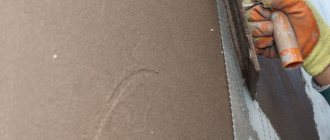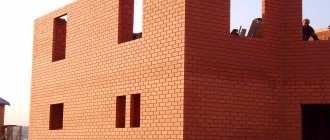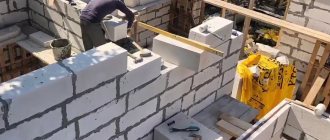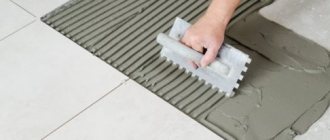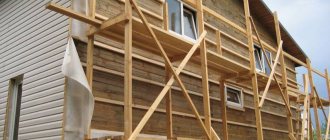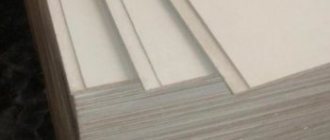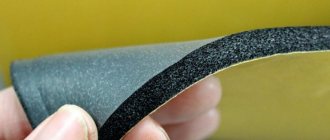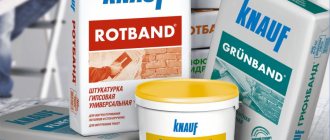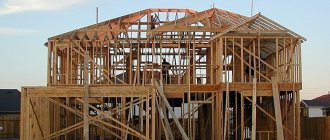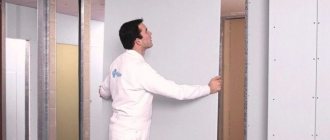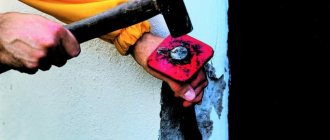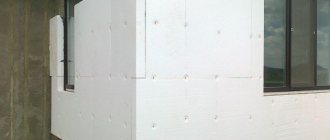According to environmentalists, up to 40% of heat and electricity generated in the northern hemisphere is spent on heating residential, industrial and other facilities. For this reason, high-quality insulation of buildings brings tangible benefits in terms of financial savings and living comfort. One of the most popular heat insulators is polystyrene foam (expanded polystyrene, EPS).
Which polystyrene foam is better for insulating the outside of a house?
Which polystyrene foam is better for insulating the outside of a house? Let’s look at this question in detail.
Is polystyrene foam safe?
In Europe, PPP has been widely used for more than half a century. During this time, no material was found that would surpass foam plastic in terms of environmental friendliness, efficiency and thermal insulation characteristics. Europeans use PPS everywhere: as insulation for buildings and utility lines, packaging material for food products and any other goods.
Styrofoam
In Russia and the CIS countries there is a certain prejudice towards this material. It is based on information about the environmental friendliness and fire hazard of polystyrene foam. The veracity of this information can be verified using documents that contain the results of tests and examinations carried out in relation to the teaching staff.
The eco- and fire safety of this material is confirmed by many official researchers, including:
- Research Institute named after Erisman (expert opinion No. 03/PM8);
- State Institution “Republican Scientific and Practical Center of Hygiene” (Republic of Belarus);
- SP 12-101-98 (SNiP for construction heating engineering);
- Research Center for Fire Safety VNIIPO of the Ministry of Internal Affairs of the Russian Federation;
- According to the BREEM environmental safety scale, PPP is classified as class A +.
The products of each foam manufacturer must undergo a certification stage. The presence of an appropriate conclusion confirms the suitability of this material for use in everyday life, construction and for other purposes.
Certificates of Conformity
Certificates for foam plastic
Hygienic characteristics of products
You need to know: the most important information about the percentage of harmful substances and their list is on the back of the hygiene certificate, which is rarely paid attention to.
After reviewing the documentation, we can conclude that the opinion about the dangers of polystyrene foam is greatly exaggerated and is based not on facts, but on myths and rumors. If there are any doubts about the rationality of using this material, it is worth considering that it will be located not inside, but outside the premises, since the technology of insulation of the facade, and not living rooms, is being considered. Therefore, PPS can be safely chosen as the main heat insulator for the external walls of a house.
Foam plastic, test results according to GOST 15588-86
Expanded polystyrene (foam) is a panel material that occupies the highest positions in sales volumes
Insulation characteristics
The first thing people pay attention to when choosing a thermal insulation material is its technical characteristics. So, we will begin our study of polystyrene foam with this:
- Low thermal conductivity, which makes the material an excellent heat insulator.
- Large temperature range of use from -50 to +75 degrees Celsius.
- Soundproofing properties. Manufacturers also indicate this characteristic, but after installing the foam, the noise reduction effect is insignificant.
- The material withstands sudden temperature changes well.
- Moisture-repellent properties.
- Flammability class 3–4 - this means that the material does not support combustion, but melts at high temperatures. There are options that are coated with special flame retardant compounds. Then the class increases and becomes G1 or G2.
- Resistant to chemical and biological influences. Foam plastic is not afraid of a variety of chemicals, be it solutions of salts, acids or alkalis. In addition, pathogenic bacteria, fungi and mold do not form on the surface of the insulation.
- High tensile and compressive strength, but mechanical stress in the form of impacts is detrimental to foam plastic.
Manufacturers indicate in quality certificates only the positive characteristics of their products and do not say a word about the disadvantages of the material. Everything is connected with the fact that everyone wants to earn as much as possible, which means they need to sell large volumes of insulation.
Pros and cons of the material
To figure out whether polystyrene foam is suitable in a particular case, you need to study all the pros and cons. The material has been used in our country for quite a long time, so you can find both positive and negative reviews on the Internet. Let's start, as always, with the good, the advantages of polystyrene foam:
- Low thermal conductivity, which means the heat stays inside the room and does not go outside.
- Light weight. Almost 90% of the material consists of air, which makes it lightweight.
- The thermal insulation structure will not load load-bearing walls.
- Low moisture absorption rates, which means that the foam not only does not get wet, but also repels moisture from the main structure.
- Inertness to biological organisms, in particular harmful bacteria and fungi, which makes the material safe for humans.
- Long service life if properly stored and installed.
- Fast and convenient installation. Moreover, you can cope with the installation without involving outside help.
- Low price, which makes the material affordable for the average buyer.
Now the disadvantages, because there are no materials that have only positive aspects; something always does not suit the consumer.
- Rodents and termites chew the foam and make nests out of it. Damaged material can no longer perform its stated functions.
- Instability to ultraviolet radiation.
- The fire retardants that cover polystyrene foam deteriorate over time, making the material a fire hazard.
- Poor steam throughput. This increases the risk of moisture accumulation on the inner sides of the wall. Thus, mold can develop in the rooms, which is dangerous to human health.
Styrofoam and rodents
If mice or rats are looking for food and a polystyrene foam barrier gets in their way, it can be removed very easily. The rodent is not afraid of the insulating board. They chew large holes quickly and easily, but do not use the material as food. Most often, the pieces that the mouse chews off are used to make nests.
You can protect foam from rodents as follows:
- Be more attentive to the cleanliness of your garden plot. Remove garbage in a timely manner and do not throw away food waste. When mice and rats have nothing to eat in the territory, they leave it.
- Get a pet cat - he will happily chase away all the rodents.
- Cover the material with a mesh that will protect the foam from the teeth of these animals.
But not only mice can damage foam. Sparrows and other small birds also use it to decorate their homes. Moreover, they can make nests right on the facade of your house. Having found a small area of unprotected polystyrene foam, the bird makes a hole and settles there.
Foam and ultraviolet
Solar radiation only harms materials such as polystyrene foam. Ultraviolet radiation destroys polymer compounds, and the substance quickly ages. That is, the material begins to crumble into small balls and no longer serves as a heat insulator.
To avoid this, after the outer walls of the house have been covered with insulating material, it must be covered with decorative finishing as quickly as possible. For this, ordinary plaster, siding or any other method of façade cladding are suitable.
About the soundproofing ability of PPS
The structure of polystyrene foam does not allow it to effectively protect the house from extraneous noise. As mentioned above, it is 90% air. This medium perfectly transmits sound in all directions. Therefore, if you need to protect a building from external noise, then you should not choose polystyrene foam.
In confirmation of this, you can see many reviews from owners of frame houses who claim that polystyrene foam does not provide any sound absorption.
About the vapor permeability of polystyrene foam
The material does not allow steam to pass through, so it is concentrated in the rooms. If the temperature outside is lower than in the rooms (and this is often the case), droplets of dew appear on the interior walls, which contributes to the development of mold fungi.
To avoid such consequences, you must resort to the following solutions:
- Initially, it is correct to calculate the thickness of polystyrene foam. This will help move the dew point outside, where condensation is removed using air flows.
- Provide additional ventilation in the premises.
- Use polystyrene foam as insulation when installing ventilated facades.
Slab size
Foam boards are produced mainly in three sizes: 0.5 * 1, 1 * 1 and 2 * 1 m. It is immediately worth noting that this insulation is easy to cut, so no problems should arise during the installation process. So, it is better to choose the material that is most suitable for the area of the insulated surface. As a rule, for insulating balconies, loggias and apartments in apartment buildings, the choice is made on slabs measuring 0.5 * 1 m : they are most convenient to work with, they are more economical, and it will be easier to insulate all kinds of complex facade details with such material. But if you need to insulate a private house, the walls of which have a regular flat surface, then it makes sense to use slabs measuring 1 * 1 m. The largest material, slabs measuring 2 * 1 m are used least often for particularly large buildings.
Classes, thickness and grades of PPP, how to choose, which one is better to use?
At first glance, all foam plastic is the same, but this is only for those who first decided to insulate the house from the outside. Polyurethane foam is divided into classes and grades, and for this purpose the following characteristics are used:
- production features;
- material density;
- edge design method.
Expanded polystyrene classes
The material is divided into 2 classes:
- Pressed - the sheet will be marked PS. The insulation is produced using press installations. The structure of the material is smooth and it is almost impossible to distinguish polystyrene granules.
- Pressless - in this case, the PSB marking is left on the foam. To create such products, high-temperature sintering of the substance is used. Although press installations are also used. The slabs consist of round or oval granules that are easy to distinguish from each other.
Letters or numbers are added to these markings, which will help determine the density of the material, where it is best to use it and the shape of the edge. Additional letters are:
- A – the correct shape of the slab.
- B - the edge cut is similar to the letter L.
- R - slabs were cut using a hot string.
- F - the product was created using a form, or a façade purpose.
- C – polystyrene foam extinguishes on its own.
- N – suitable exclusively for outdoor use.
PPP brands
Now let's look at the grades of material. To determine the brand, manufacturers indicate a digital value. For non-press and press representatives these values are different. Let's look at each class separately in detail.
Brands of pressless polystyrene foam
On the construction market, this class of insulation is represented by the following brands:
- 15 – low-density foam. The cheapest. Most often used for packaging household appliances or fragile items. It is easy to damage;
- 25 - if the letter F is added to such numbers, then the material is suitable for finishing the facade. The density is much higher, which means the strength is improved. It is often chosen to create decorative elements in the interior or landscape - the density of the material allows;
- 35 - foam with this marking can be used for various purposes. It is a good insulation material for facades, as a component for multilayer panels (thermo, sandwich, reinforced concrete);
- 50 is the densest and most durable material, and also the most expensive. It is used for insulation of underground structures and communications.
Brands of pressed polypropylene
Using the pressing method, PVC foam is produced. Polyvinyl chloride resin is added to the composition. The material is very durable and reliable. It is used in all areas of construction and insulation. A number from 1 to 4 is added to the letters PS. The higher the numerical value, the higher the density, and therefore the strength, of expanded polystyrene.
The material of the press production method is suitable for creating containers for aggressive substances. It is resistant to most known chemically active liquids.
WHAT IS THE OPTIMAL THICKNESS OF FOAM FOR WALL INSULATION?
The thickness of the foam is another important parameter, on which the success of the entire insulation will largely depend. The indicator can vary within a fairly wide range from 20 to 100 mm. When making a choice, you should take into account not only the density of the product, but also the thermal conductivity of the walls themselves.
So, for work on the outside of the building, you will have to buy foam plastic to insulate the walls of a country house of a fairly large thickness - 50–100 mm. If the main goal is to create insulation for an apartment from a multi-story building, then it is quite possible to limit yourself to 50 mm slabs. In old wooden houses, which themselves do not retain heat well, it is better to play it safe and use foam plastic 100 mm thick.
What is bad about low-density polystyrene foam?
For high-quality thermal insulation of a house, it is necessary to choose the right density of the material. Low-density polystyrene foam consists of granules that are located relatively far from each other. This helps the material to better pass steam from the interior, but the granules themselves are not able to pass liquid.
Therefore, moisture gradually accumulates in the insulation and is transferred to surrounding materials:
- cladding;
- load-bearing wall.
As a result, the surrounding substances gradually begin to collapse. In addition, the strength of low-density foam is also low, so it quickly crumbles and collapses.
What is sold under the brand name PSB-25
Products that are in demand are most often counterfeited. This fact applies not only to polystyrene foam, but also to plaster mixtures, paints and even food and medicines. In addition, the conditions of production have long been no longer controlled by government agencies. Therefore, manufacturers, by reducing the cost of the material, also reduce the cost of its production, which leads to a decrease in quality.
According to state standards, polystyrene foam with a density of 15 to 25 kg/m3 can be produced under the PSB-25 brand. Having such boundaries, manufacturers will not waste money and will create an option with a lower density, which is completely legal. This means that low-density PSB-25 foam is available on the building materials market.
How to find out the density?
To prevent the seller from selling a product with a low density indicator under the guise of being expensive, you can check the value yourself. The manipulation is a little labor-intensive, but as soon as you start performing such actions, the consultant will tell you everything as it is.
So, to find out the density of the material you need to weigh 1 cubic meter of polystyrene foam. If grade 25 insulation is selected, then it should weigh exactly 25 kg. In the store we do the following:
- We calculate the volume of one sheet of selected foam.
- Let's weigh it.
- Divide volume by weight.
- The resulting value is compared with the one that should be.
Extruded PPS
To make this foam insulation, an extruder is used, where polystyrene balls are sintered under high pressure. The result is a board with a higher density than, for example, PSB-50, but at the same time much thinner. Therefore, if 10 cm thick foam plastic is required to insulate the facade, then 5 cm thick extruded polystyrene foam can be chosen.
He was the first to introduce such insulation to the building materials market, which is why you can often find the second name penoplex. But there are other companies that offer products of similar quality. These are Technoplex and Ursa.
Classification of façade foam plastic by production method
Conventional foam for wet plaster for facades
Foam or expanded polystyrene (EPS) is a rigid insulating material produced in the form of slabs of various densities and thicknesses. The raw materials for its production are polystyrene granules, and the foaming agents are low-boiling hydrocarbons and gas-forming agents. When heated, the granules increase in volume by 10-30 times. Carbon dioxide, isopentane or other reagents foam polystyrene. As a result, in the finished product the polymer occupies only 2% of the volume, and the rest is occupied by gas.
According to the production method, PPP is divided into two types:
- Produced by the sintering method, when, when heated, the granules are sintered together with the simultaneous formation of the product.
- Obtained by foaming from a granular mass to which a gas-forming agent is added.
Various production methods make it possible to obtain a material similar in composition, but differing in structure (open or closed) and cell density.
Technology of thermal insulation of external walls with polystyrene foam
There are several ways to install polystyrene foam on the facade:
- On glue.
- Mechanical fastening using dowels.
- Combining method. Both glue and fasteners are used. It's more reliable.
Everyone can choose the appropriate option for themselves, but professionals recommend using the latter method. In order for the entire structure to remain securely adhere to this plan.
Preparatory work
It all starts with preparing the foundation. This stage is as important as fixing the insulation or finishing it. Here they do the following:
- If the building was previously covered with finishing, it is removed.
- Remove fasteners and hanging structures.
- The wall is cleaned of dirt, grease stains, solution build-up, and dust.
- Prime the surface. For porous materials, such as foam or gas block, choose a deep penetration primer and apply it in 2 layers. It is also desirable that the composition be antibacterial. Then the main structure will be protected from harmful microorganisms. The soil allows you to increase the adhesion of the material from which the load-bearing walls are made, and therefore securely fix the insulation to the base.
- Next, install the starting profile at the border of the base and the beginning of the wall. It will serve as a support for the foam. The profile is fixed immediately along the perimeter of the entire building. Be sure to check the horizontal position using a building level.
- Now we begin to prepare the adhesive solution. The glue should only be suitable for polystyrene foam; other brands will not work. Cooking instructions are on the package. Be sure to adhere to the proportions, otherwise the material will not stick to the wall.
Bonding boards
The finished solution must stand for some time so that all components react with each other. Next, proceed to gluing the insulation boards:
- A thin layer of the solution is applied around the perimeter of the foam board. In these places, the mixture must be rubbed into the material - this increases adhesion.
- Make 2-3 small blots in the center.
- The slabs are installed in the starting profile from the lower left corner of the house.
- The foam is pressed tightly against the wall so that the solution is evenly distributed under the sheet. If excess adhesive solution is visible, remove it with a spatula. The evenness of the installation is checked using a building level.
- Glue is also applied to the next plate and pressed tightly against both the wall and the previous sheet.
- In the second row, the vertical joints should not coincide. To do this, the foam is shifted 15–20 cm to one side.
- After all the walls are completely covered with insulation and the adhesive solution has set, begin mechanical fixation. Make holes using a hammer drill and install disc-shaped dowels.
Installation of the reinforcing layer
When the glue is completely dry, begin reinforcing the surface of the foam. For this use:
- An adhesive solution, perhaps the same one that was used to fix the slabs to the wall.
- Fiberglass mesh.
There is also a special technique for gluing the mesh:
- First of all, apply a thin layer of glue using a spatula.
- Pieces of mesh 15–20 cm wide are glued to the corners. The mesh element is laid in such a way that the two walls have identical segments. Using a clean spatula, press the fiber into the adhesive solution.
- If it doesn’t work out, add glue on top and smooth it out.
- Next, we begin to reinforce the wall.
- A mesh is placed on the corner element with an overlap of 10 cm. It is also pressed into the solution with a spatula.
- When this layer has dried, apply the finishing layer to completely hide the mesh under the glue.
Applying a decorative layer
After applying the last layer of glue, wait until it dries completely. Next, it is customary to cover the foam insulation with plaster. This may be a decorative option with an original pattern or a regular, even layer painted in a suitable color.
After all the work is completed, the house will be warm and updated at the same time. And this is a solution to two problems at once. Of course, whether to choose polystyrene foam for insulating a house or not is everyone’s business. The nuances of choice and technical characteristics listed above are quite enough to make the right choice.
Application area
When insulating a house from the inside, it is necessary to increase the thermal insulation of the following structures:
- in the construction of the basement floor on the ground, if the underground floor is heated;
- in the floor pie of the first floor when installing a cold basement or underground;
- exterior walls;
- ceiling above the top floor when installing a cold attic;
- covering when installing a warm attic;
- attic roof.
Of all these parts, polystyrene foam for home insulation is best used in wall construction. In floors, foam plastic should only be used in conjunction with joists, which will take the main load from the floor, furniture, etc. The thing is that the density of polystyrene foam does not allow it to withstand high compressive loads.
Floors with foam plastic without joists can be used for technical purposes - attic floors, etc. Therefore, if you want to efficiently insulate the floor under the screed, the best insulation option is extruded polystyrene foam. The insulation on top should cover a layer of cement-sand screed 50 mm thick with additional reinforcement. For reinforcement, a mesh of reinforcement with a diameter of 3-4 mm is used.
Another area of application of foam plastic is the production of permanent formwork for concreting. This insulation is used in the construction of strip foundations. Allows you to reduce the number of stages of work on pouring a monolith at home and at the same time perform thermal insulation of the structure. Reliable waterproofing must be provided on top of polystyrene foam.
